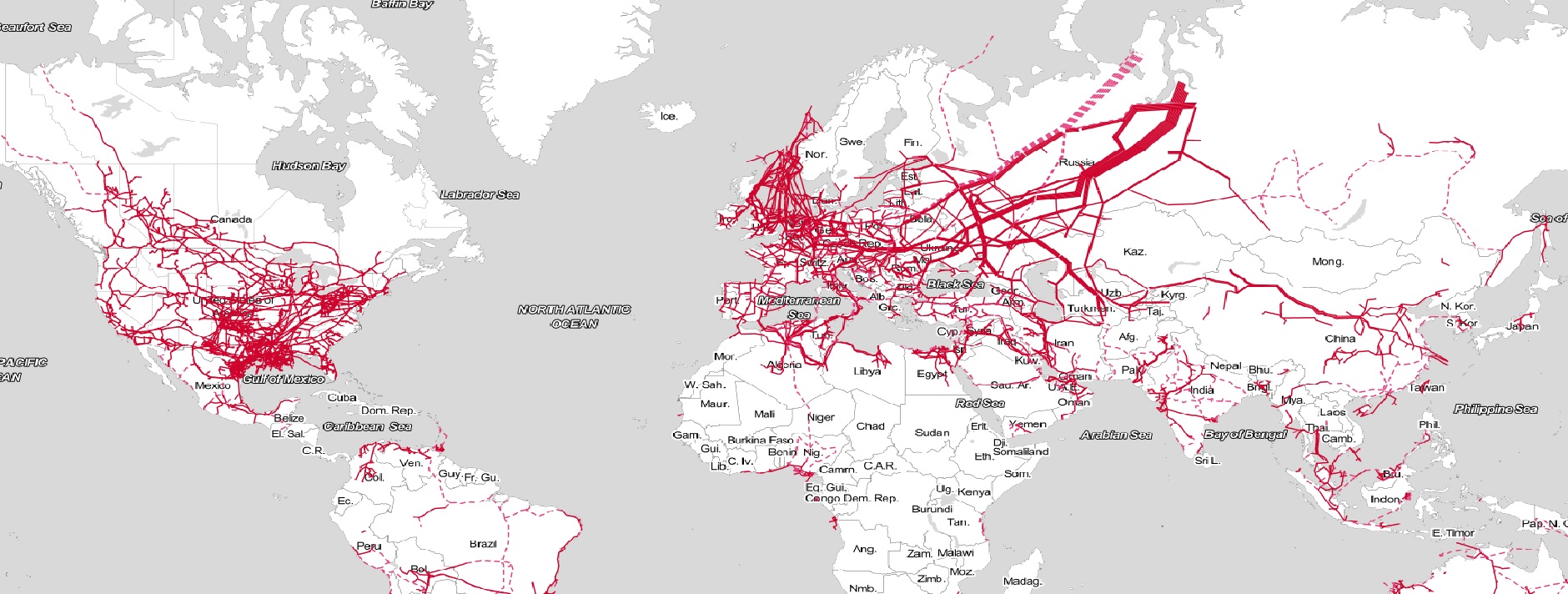The WORLD of Gas

Global Pipeline Network
Around the world the trade in natural gas is still predominately local in nature. Approximately 70% of all natural gas consumed globally is produced in the same country as where it is consumed, while 30% is traded. Existing pipeline capacity and trade is largely concentrated in the established gas markets of Europe and North America. More than two-thirds of global cross-border pipeline capacity is concentrated in Europe, both providing imports from CIS countries and North Africa and providing intra-regional connections. A further 12% of capacity connects the North American markets of Canada, Mexico, and the United States. Natural gas logistics infrastructure economics vary according to capacity and distance. Pipeline transport is most efficient way to carry large volumes of gas over shorter distances. LNG transport is best for small-to-medium volumes over longer distances, or for moving stranded gas to distant markets.
Learn more
- Snam, Global Gas Report 2017